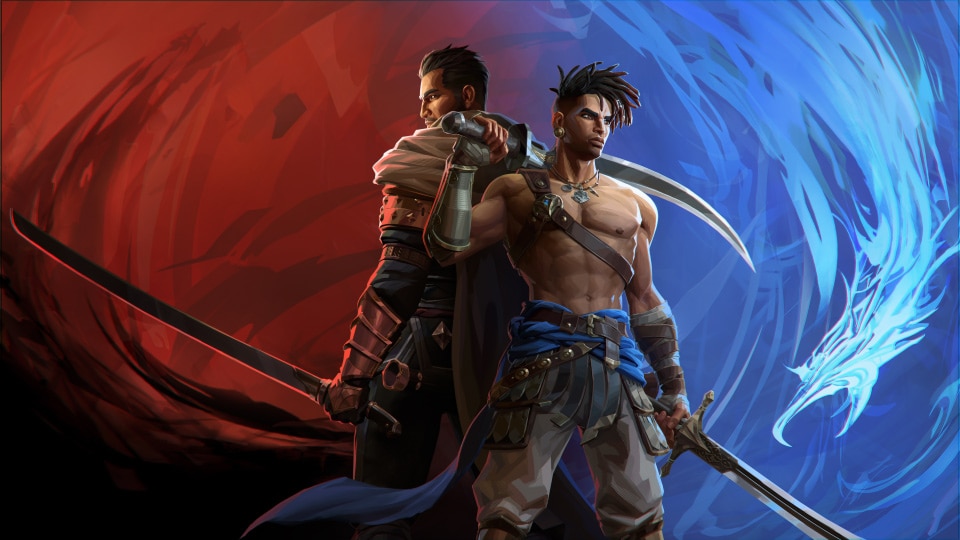Prince of Persia: The Lost Crown is out now on Switch, PlayStation 5, PlayStation 4, Xbox Series X|S, Xbox One, PC (via Epic Games Store and the Ubisoft Store), and Amazon Luna. An all-new adventure set in a milieu of Persian mythology and history, Prince of Persia: The Lost Crown is a 2.5D action-adventure that casts players as Sargon, youngest member of the elite, superhero-like Immortals. Armed with acrobatic combat skills and an ever-growing arsenal of time powers, Sargon explores the mythical Mount Qaf in search of the kidnapped Prince Ghassan, and gradually unravels the dark secret at the heart of the mountain’s time curse.
Inspired by Metroidvanias, Prince of Persia: The Lost Crown invites players to explore a vast citadel complex and its outlying biomes, including forests, caves, snowy peaks, and much more. Developed by Ubisoft Montpellier – the studio that also produced Rayman Origins and Rayman Legends – the game builds on the ultra-responsive, highly varied platforming action that the Rayman games established – as well as their tradition of spike- and trap-filled pathways that sometimes leave little room for error. Demanding quick reflexes, it delivers performance to match, with all platforms targeting at least 60 frames per second.
It also makes combat a top priority; inspired by the likes of Street Fighter and Super Smash Bros., its controls are straightforward and streamlined, enabling players to gracefully execute single-button sword combos and extend them by juggling, dashing, and using Sargon’s bow and arrow to keep enemies stunned. It also pays to keep a close eye on enemy movements; if a yellow flare appears when an enemy is about to strike, that means parrying will flow into a counterattack, letting you execute a finisher for potentially massive damage.
“Prince of Persia has always been about time, and what we wanted to do differently from other Prince of Persia games is to have time affect every element, every aspect of the game,” says Producer Abdelhak Elguess. “We wanted to use it in combat, with Sargon’s time powers, and we wanted the narrative to be warped by time. The puzzles and the world itself are completely warped by time. So we have the combat, the puzzles, and the narration as game pillars, but they are all linked by one strong theme, which is time.”
![[UN] [POPTLC] Out Now - New Img 1](http://staticctf.ubisoft.com/J3yJr34U2pZ2Ieem48Dwy9uqj5PNUQTn/6qlTdMpKCmMyrdIVG5mRA4/3fb1910f92bf636dcc1ef73778565ead/POPTLC_screen_launch_Upper_City_Fight_180124_9AM.jpg)
As Sargon explores Mount Qaf, he’ll earn the ability to create a “shadow” of himself frozen in time and space, and “rewind” to it to instantly switch places. He can bend time to double-jump, pull himself to distant points, and dash forward in midair. He can switch realities to make platforms appear and disappear, or pull objects and enemies into a pocket dimension to be hurled out later. He can also tackle time-warping puzzles in which multiple recordings of his actions have to work together to open a path forward. One thing he can’t do, however, is freely rewind time – which, Elguess explains, was a deliberate design choice.
“When you use the rewind, you are removing all the players’ actions,” says Elguess. “You lose some interactivity. We didn’t want something that sometimes stopped the game – you are waiting for the rewind to finish – because we wanted to release something where you are always in control of your character.”
The solution, Elguess says, is the aforementioned shadow ability, which lets players “rewind” to a pre-selected spot without ever halting or slowing the action.
![[UN] [POPTLC] Out Now - New Img 2](http://staticctf.ubisoft.com/J3yJr34U2pZ2Ieem48Dwy9uqj5PNUQTn/1rGnSKgJ65tFTAwnS1UBu9/727ac83589a7b4ff9f48962cc17e1532/POPTLC_screen_launch_Orod_Fight_180124_9AM.png)
Prince of Persia: The Lost Crown re-imagines the franchise in another important way: by embracing its Persian setting in a way that’s unprecedented for the series. Sargon’s adventure blends Persian history and mythology with anime and superhero influences; Mount Qaf is a place where larger-than-life Immortals demolish huge monsters with impossibly flashy techniques, and where the mysterious bird-like deity known as the Simurgh is present everywhere, both figuratively and literally – its massive wings are visible in the skyline at Mount Qaf’s heights, and its claws protrude into the darkest depths. The game’s story references historical monarchs, including Xerxes and Darius, and ancient Persian art and statuary are depicted throughout Mount Qaf. Much of the ambient music players hear throughout the game is also composed by Samar “Mentrix” Rad, an Iranian-born composer whose work makes extensive use of traditional Persian instruments and musical styles.
“In the past, even though it was Prince of Persia, there were many Arabic elements mixed in,” says Elguess. “From the beginning, we wanted Prince of Persia: The Lost Crown to really celebrate Persia. It's very, very different from the Arabic world. And we wanted to go farther into the past, before the Islamic period, because we think mythology is universal. And the more we research, the more we see that there have been many exchanges between the different mythologies. For instance, in Europe, we know the manticore from Greek mythology, but it comes from Persian mythology.
![[UN] [POPTLC] Out Now - New Img 3](http://staticctf.ubisoft.com/J3yJr34U2pZ2Ieem48Dwy9uqj5PNUQTn/23G2HAiFdzi6esPIzSezOC/5173d3a6f9baf40135d95961ce6a4796/POPTLC_screen_launch_Vayu-s_Wave_180124_9AM.png)
“It was interesting to see how mythologies communicate together, and when we researched Persian mythology, there were so many exciting things that we wanted to talk about; many creatures, many stories,” Elguess says. “So we were really excited to go in this direction.”
Prince of Persia: The Lost Crown is out now on Switch, PlayStation 5, PlayStation 4, Xbox Series X|S, Xbox One, PC (via Epic Games Store and the Ubisoft Store), and Amazon Luna, and is also available with a Ubisoft+ Premium subscription. For more about the game, check out how it will run on your gaming setup of choice, and visit the Ubisoft Store.



